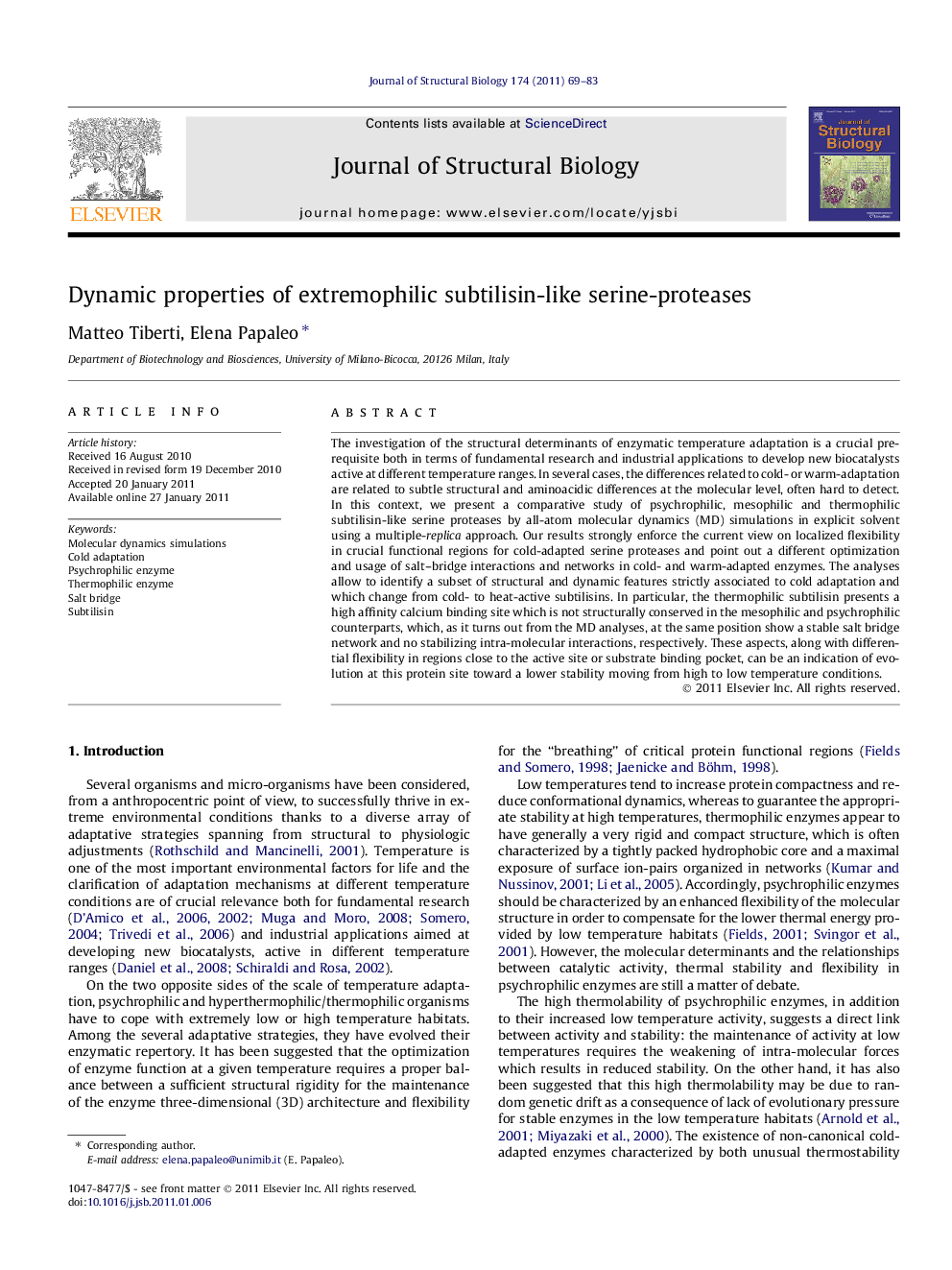| Article ID | Journal | Published Year | Pages | File Type |
|---|---|---|---|---|
| 5914639 | Journal of Structural Biology | 2011 | 15 Pages |
Abstract
The investigation of the structural determinants of enzymatic temperature adaptation is a crucial pre-requisite both in terms of fundamental research and industrial applications to develop new biocatalysts active at different temperature ranges. In several cases, the differences related to cold- or warm-adaptation are related to subtle structural and aminoacidic differences at the molecular level, often hard to detect. In this context, we present a comparative study of psychrophilic, mesophilic and thermophilic subtilisin-like serine proteases by all-atom molecular dynamics (MD) simulations in explicit solvent using a multiple-replica approach. Our results strongly enforce the current view on localized flexibility in crucial functional regions for cold-adapted serine proteases and point out a different optimization and usage of salt-bridge interactions and networks in cold- and warm-adapted enzymes. The analyses allow to identify a subset of structural and dynamic features strictly associated to cold adaptation and which change from cold- to heat-active subtilisins. In particular, the thermophilic subtilisin presents a high affinity calcium binding site which is not structurally conserved in the mesophilic and psychrophilic counterparts, which, as it turns out from the MD analyses, at the same position show a stable salt bridge network and no stabilizing intra-molecular interactions, respectively. These aspects, along with differential flexibility in regions close to the active site or substrate binding pocket, can be an indication of evolution at this protein site toward a lower stability moving from high to low temperature conditions.
Keywords
Related Topics
Life Sciences
Biochemistry, Genetics and Molecular Biology
Molecular Biology
Authors
Matteo Tiberti, Elena Papaleo,
